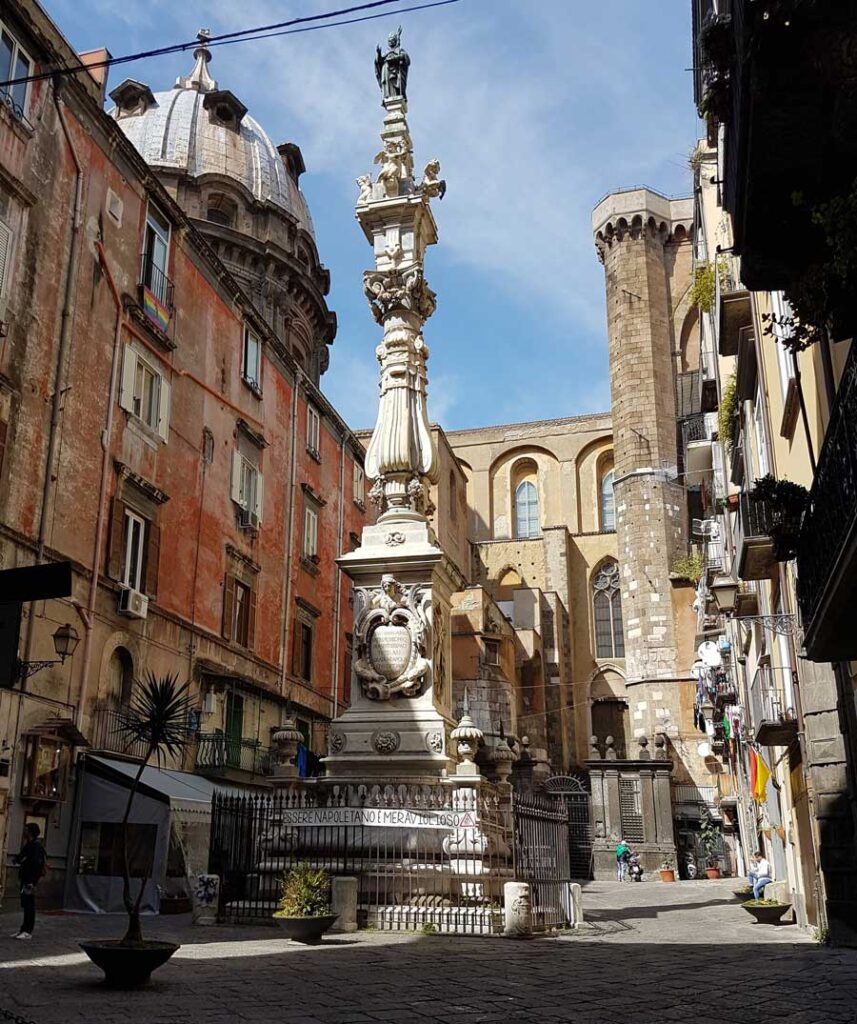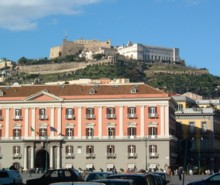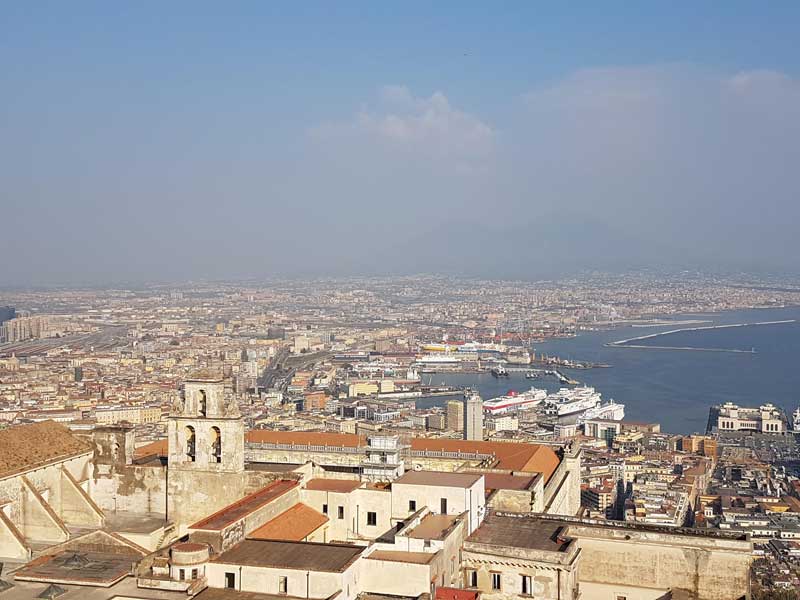Tourist information, hotels and travel
Colourful, vibrant, exciting and varied, Naples (Napoli) is one of the most fascinating cities in Italy and in Europe. Simultaneously ancient and modern, welcoming and intimidating, blessed and cursed by its location, the city is loved by some of its visitors and hated by others.
A brief and nervous encounter is likely to acquaint you with Naples’s worst features: chaotic traffic, dirty streets, the pickpocket-infested station area, streets where the outsider feels uneasy. Even a fleeting visit, though, offers glimpses of the riches the city has to offer: its incredible archaeological collections, its art, its views, its food. “See Naples and die” is the most famous comment on the city. If you spend enough time here to deepen your acquaintance, to get the feel of the city, to explore its varied sights, to stroll by the sea, to feast on pasta, seafood, pastries and pizza, and to meet the Neapolitans bringing their heritage back to life, then you may join those who learn to love Naples.
The historic heart of Naples is quite compact and can be visited in a day, exploring on foot. Here you can see the ancient layout of narrow lanes, visit churches from various historic eras, explore underground labyrinths of ruins and ancient aqueducts, admire artworks including Caravaggio’s Seven Acts of Mercy and the famous statue of a veiled Christ by Giuseppe Sanmartino.
Outside the oldest part of the centre, tourist sights spread out in a variety of directions, best visited in pre-planned ‘themed’ days. The ancient Roman towns of Pompeii and Herculaneum are both on a railway line south of the centre, on the line to Sorrento. Vesuvius, the volcano which destroyed the two towns, still threatens the Naples area, but until it next erupts, tourists can catch a bus and walk up to the crater’s rim. Other longer excursions include the islands of Capri, Ischia and Procida, and the under-visited volcanic landscape of the Phlaegrean Fields (Campi Flegrei).
Within the city, other sights include two sets of historic catacombs run by enthusiastic young teams bringing tourism and respectability to deprived areas of Naples, the grand royal palace, three fortresses, several art galleries including the important collection at the Museo di Capodimonte, and one of the best archaeological collections in the world. Not all of the sights of Naples are old: its underground train network, the Metropolitana, has been taking decades to construct and now has stations which are literally works of art, designed by contemporary artists and worth visiting for that alone.

Naples travel information
Get to Naples
Naples is situated on the coast, approximately two hours by train from Rome. Journey length and prices vary according to which kind of train you take. See our Get Around Italy page for more information on Italian rail services. Train services are frequent and connect Naples with the south and Sicily as well as with northern destinations (via Rome). The main train station in Naples is Stazione Centrale, located in Piazza Garibaldi. Head downstairs for the Metro; the Piazza is also well-served by buses. Naples has an international airport, Naples Capodichino Airport, and budget Easyjet and Britannia flights provide cheap connections with the UK.
Get around Naples
An energetic walker armed with a streetmap can see most of central Naples on foot. Naples public transport system includes buses, trams, funiculars and Metro trains. The same tickets are valid for all of these, and and cover a specified length of time; buy them in bars or tabacchi. A one-day ticket (un biglietto giornaliero) is good value. For travelling further afield, the Circumvesuviana commuter train runs to Sorrento via Pompeii, and boat and hydrofoil services operate between Naples and Capri, Ischia, Sorrento and the Amalfi Coast.
Naples tourist attractions
The Palazzo Reale, royal palace, was started by the city’s Spanish rulers, continued by the Bourbons and completed by the kings of Italy. The palace, in Piazza del Plebiscito, is open to the public and you can admire its grand interiors. Close by, the famous opera house of Naples, Teatro San Carlo, puts on a fine season of operas and ballets, and it’s worth trying to get tickets for a performance. Another imposing space is to be found opposite: the Galleria Umberto I, a huge glass-roofed arcade dating to 1887. Castel Nuovo, the great fortress protecting the port, contains two museums, as well as the local authority offices.
Much of the character of Naples is contained in the chaotic and untidy streets around Via Toledo and Spaccanapoli (the street splitting Naples in two), where the impoverished and anarchic Naples of myth is still vibrantly and deafening alive. Within these areas, there are many interesting piazzas and churches, some sadly damaged by bombing in the Second World War.
Naples Cathedral, the Duomo, is dedicated to San Gennaro, and is a medieval building with an early twentieth-century facade, and lovely Renaissance chapels. The attached Basilica Santa Restituta is part of an ancient building, and from here you can access Greek and Roman excavations. The Chapel of San Gennaro is the home of the Saint’s blood, kept in phials which dutifully liquify each year, to great rejoicing.

Some of the most important sights of Naples – and Italy – are to be found in the Archaeological Museum, the Museo Archeologico Nazionale (closed Tuesdays). The famous Farnese Collection (gathered by the aristocratic family of the same name) consists of some of the finest pieces of Greek and Roman sculpture still existing. The works on display originate from the Baths of Caracalla in Rome, Pompeii, Herculaneum and other sites. The museum is fascinating in itself, with vast halls barred off and covered in dust-sheeting, balconies with ‘Danger! Likelihood of collapse’ notices, and erratic labelling. You may not find every section open to visitors, but the collections are so rich that you are sure to see some treasures. Several of the mosaics from local sites are breathtakingly beautiful and look amazingly fresh. Most jaw-dropping of all for innocents like ourselves is the collection of Roman ‘pornography’ on the first floor. Including garden ornaments, statues, frescoes and good-luck charms, these two rooms illustrate a bawdy and robust aspect of Roman culture (you may never look at a caryatid in quite the same way again).
Naples day trips
Naples is a good base for visiting some of Italy’s finest tourist sights. Vesuvius, Pompeii, Herculaneum, the islands of Capri and Ischia, Sorrento and the Amalfi Coast are all within easy reach. Even Rome is just a couple of hours away by train.

Naples hotels and B&Bs
> Naples hotels & B&Bs – find and book accommodation in and around the city. I’d recommend reading the latest reviews to get a feel for the accommodation and its surrounding area. Staying near a transport hub can be convenient if you’re just passing through; otherwise an area on the edge of the historic centre near a Metro station and/or museums may be your most convenient option.
On this site
Useful links
